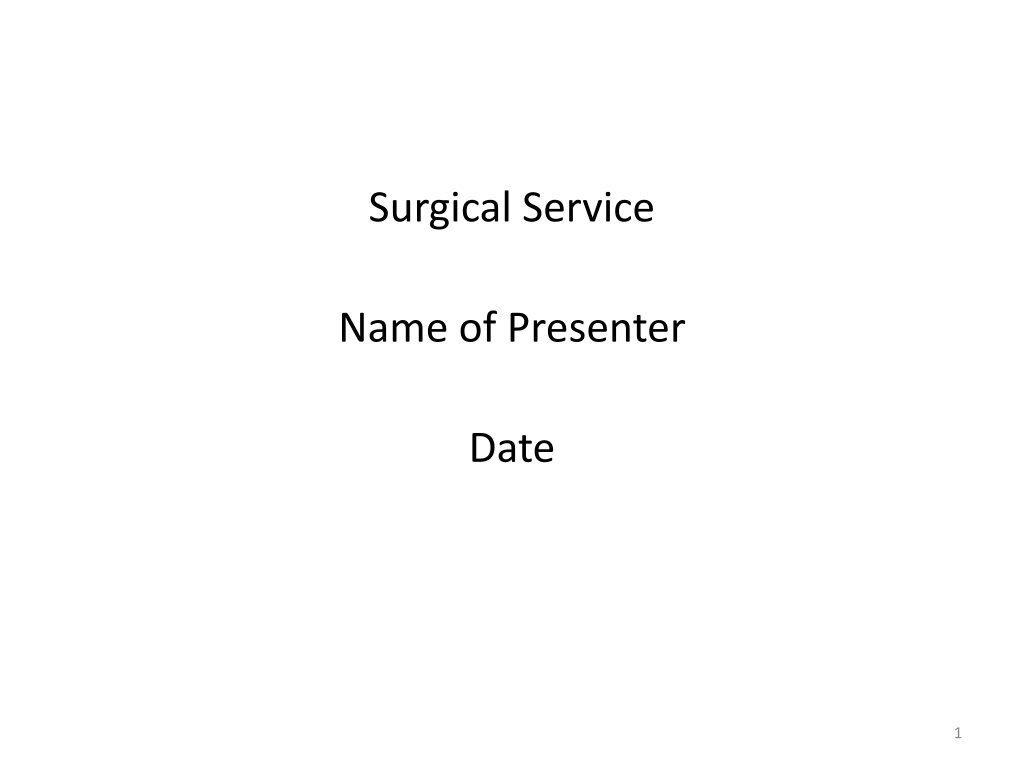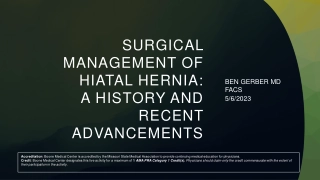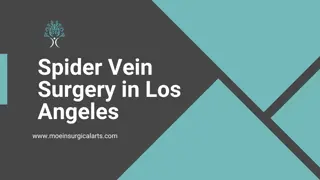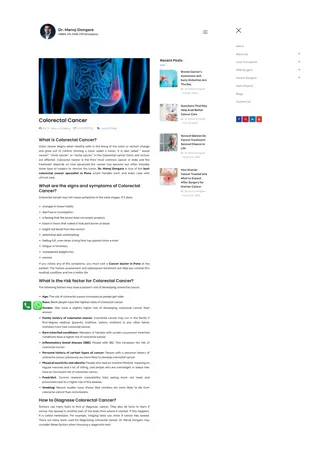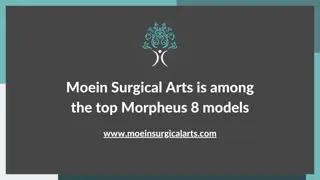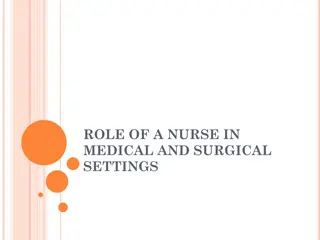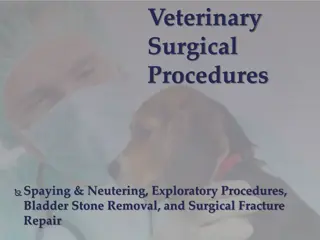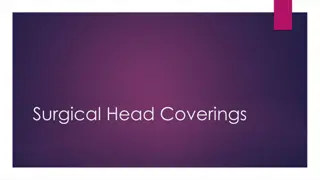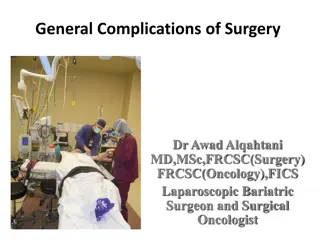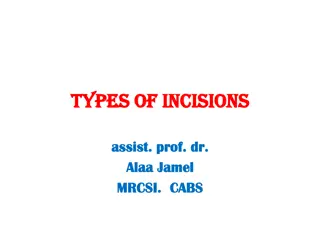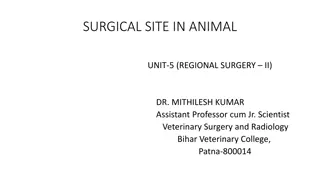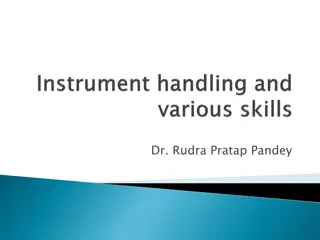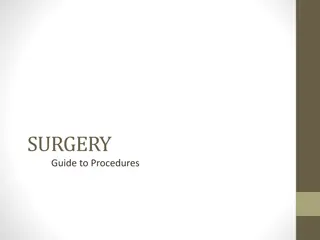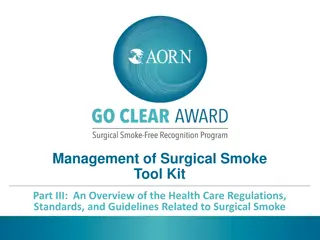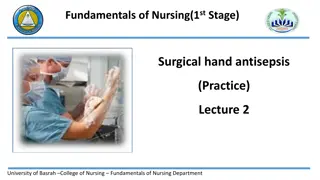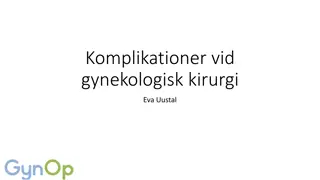Surgical Service Presentation Analysis
This presentation analyzes a case involving a surgical service, focusing on the situation statement, background clinical information, error assessment, root cause analysis, review of literature, recommendations for preventing future issues, and guidance notes for presenters. It delves into the details of the complication, patient history, procedural details, and management strategies, aiming to provide insights and suggestions for improvement.
Download Presentation

Please find below an Image/Link to download the presentation.
The content on the website is provided AS IS for your information and personal use only. It may not be sold, licensed, or shared on other websites without obtaining consent from the author.If you encounter any issues during the download, it is possible that the publisher has removed the file from their server.
You are allowed to download the files provided on this website for personal or commercial use, subject to the condition that they are used lawfully. All files are the property of their respective owners.
The content on the website is provided AS IS for your information and personal use only. It may not be sold, licensed, or shared on other websites without obtaining consent from the author.
E N D
Presentation Transcript
Surgical Service Name of Presenter Date 1
Situation Statement of the Problem Admitting Diagnosis: Procedure Performed/Care provided: Complication: 2
Background Clinical Information Pertinent to Adverse Outcome Pertinent patient history Indication for surgical procedure/care Pertinent labs and imaging Procedural details related to complication Hospital course related to complication or recognition of the complication Management of complication 3
Background Clinical Information Pertinent to Adverse Outcome Pertinent patient history Indication for surgical procedure/care Pertinent labs and imaging Procedural details related to complication Hospital course related to complication or recognition of the complication Management of complication 4
Assessment Error Analysis 5
Analysis Root Cause Analysis Cause Effect Patient factors Team factors Individual factors Enter contributing factors here Enter contributing factors here Enter contributing factors here Complication Enter contributing factors here Enter contributing factors here Enter contributing factors here Rules/Policy Organization Environment 6
Review of Literature Evidence-based practice 7
Review of Literature Evidence-based practice 8
Recommendations Proposed Actions to Prevent Future Similar problems 9
Guidance notes to presenters Situation is the statement of the problem. It allows the audience to focus their attention to the pertinent points in the case related to the complications. 10
Background: here you provide clinical information pertinent to adverse outcome: Patient History : Pertinent HPI / PMH / PSH / meds) Indication for Intervention: Important to know thought process into performing an operation Labs and Imaging Studies: Only show pertinent labs and images Procedural Details: Describe technical or physiologic details related to outcome Hospital Course: Present non-procedural events related to outcome (Be brief, i.e., no need to list when patient passed flatus) Recognition of the Complication: State how/when complication was recognized Management of Complication: Describe the steps taken to manage the complication MAKE THIS PART SHORT & SWEET! 11
Assessment & Analysis: trainee presenters often neglect or are weak at error analysis. Be prepared to identify and discuss the possible cause(s) of the complication: What happened? (Error analysis): Describe sequence of events leading to adverse outcome Why did it occur? (Root Cause analysis): Try to identify the root case of the complication i.e. what allowed this complication to occur, what aspects of system failed and why? If you could go back what would you change to prevent this complication from occurring? 12
Review of literature: here you present appropriate literature pertinent to the complication. What is the best evidence related to this avoiding this complication? This may relate to: - Identification of complication - Management of complication - Prevention of complication 13
Recommendations: This is another area where trainee presentations could be improved. Trainees are often good at discussing the complication but do not list recommendations for the audience that can help prevent these complications. You should: Identify how the problem could have been prevented or better managed Identify the learning points from the case 14
